Hod & Hod LLC
FoosFoot™ by Hod and Hod – Foot & Ankle Trainer for Peak Performance
FoosFoot™ by Hod and Hod – Foot & Ankle Trainer for Peak Performance
Couldn't load pickup availability
Say farewell to nagging foot pain and lingering ankle injuries with FoosFoot™, a revolutionary device designed by athletes to tackle the problem head on and strengthen muscles using patented exercise technology. FoosFoot’s™ unique design immediately helps to strengthen and build a strong base through plantar flexion and dorsiflexion movement while conveniently attached to your foot. In just 10 quick minutes a day, you’ll become "Bulletproofed from the Ground Up".
✅ (3) - patented straight line bands
✅ (2) - 4 inch looped bands
✅ (3) - 6 inch looped bands
✅ Designed in the US
✅ Universal Design - Fits both feet
✅ Fits feet 8.5 inches to 12 inches
✅ Approximate Men’s Size (Sizes Vary) 6 - 14.5
✅ Approximate Women’s Size (Sizes Vary) 5.5 - 12+
✅ Color - Matte Black
Share
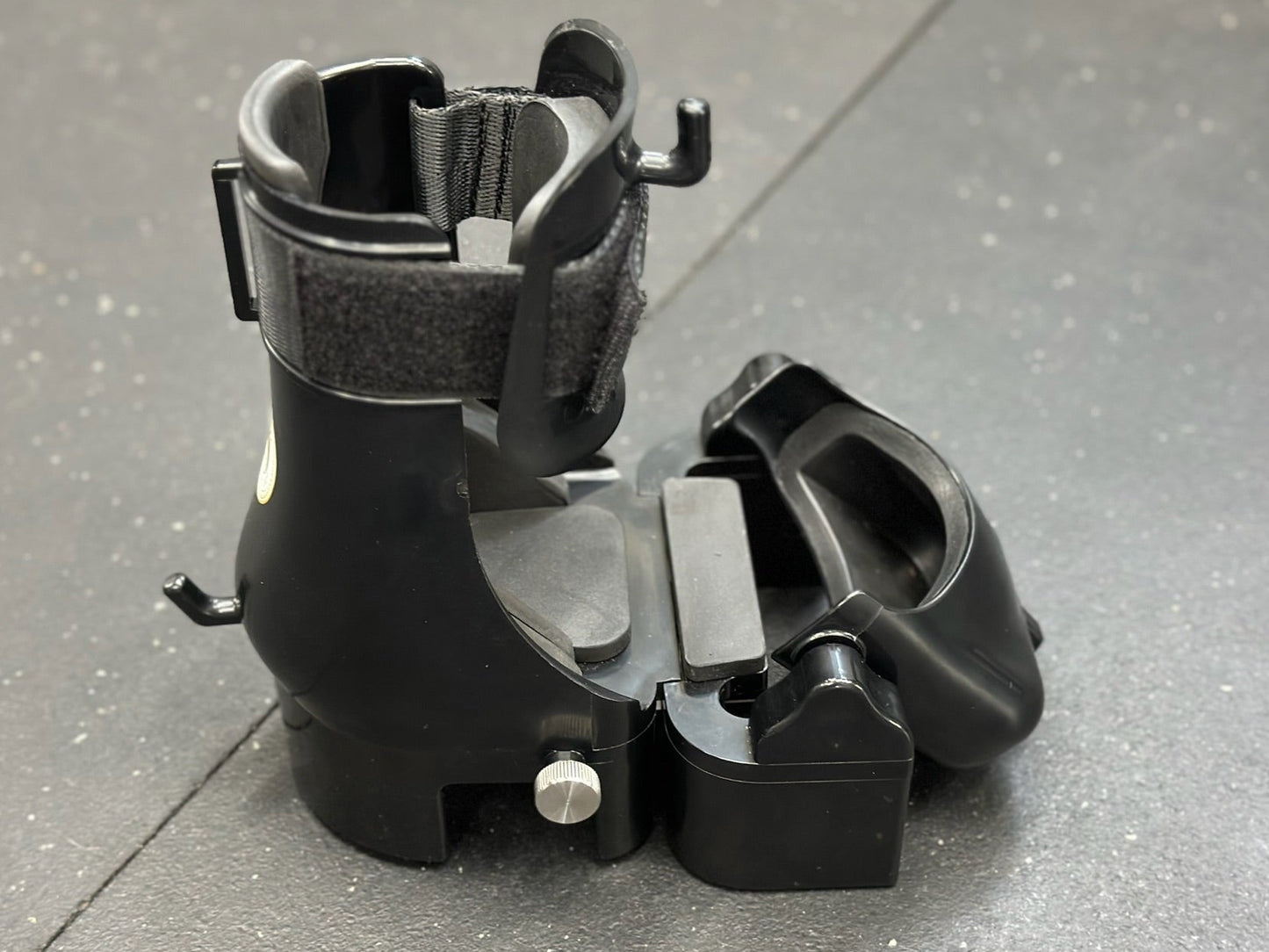
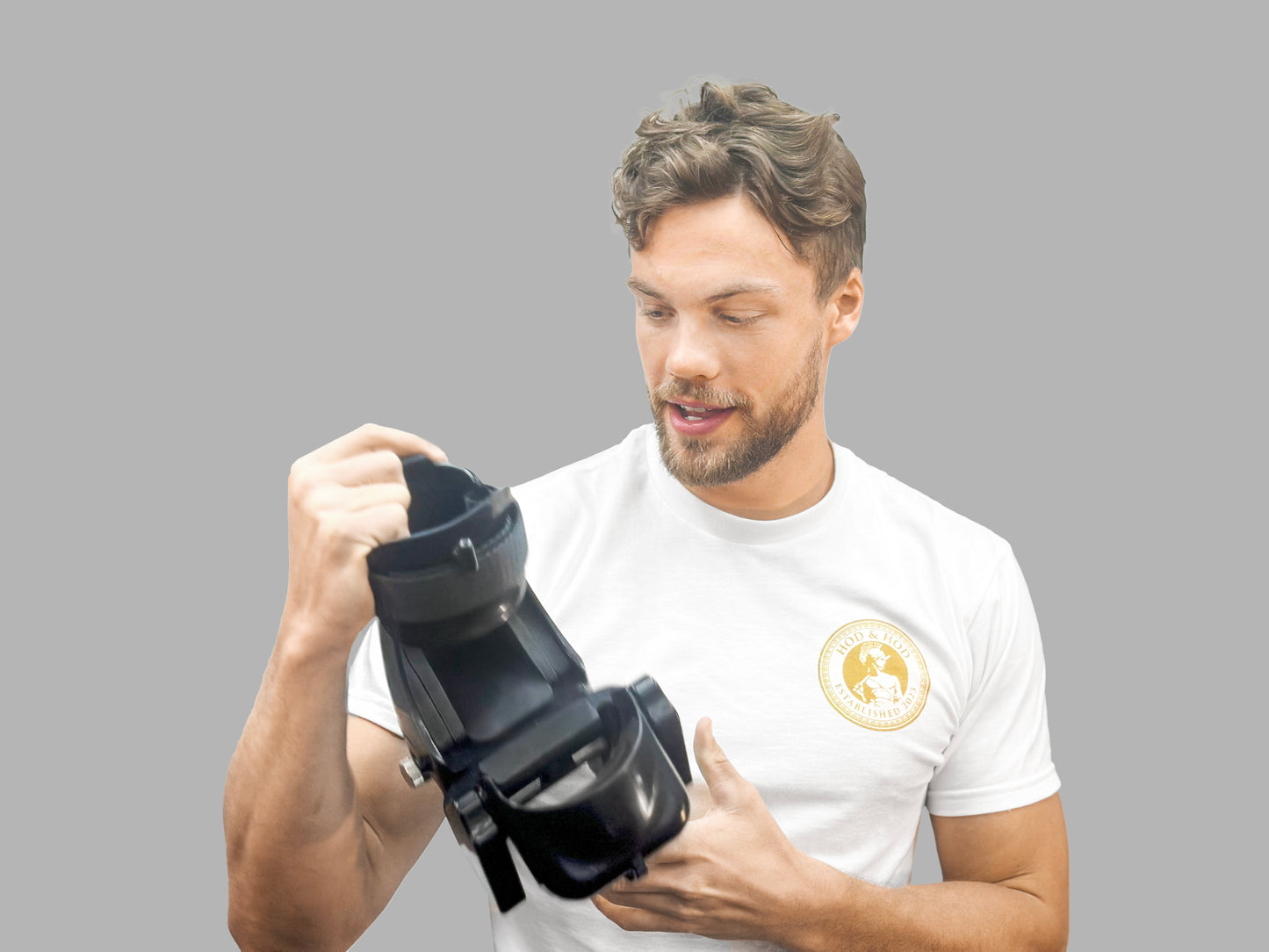
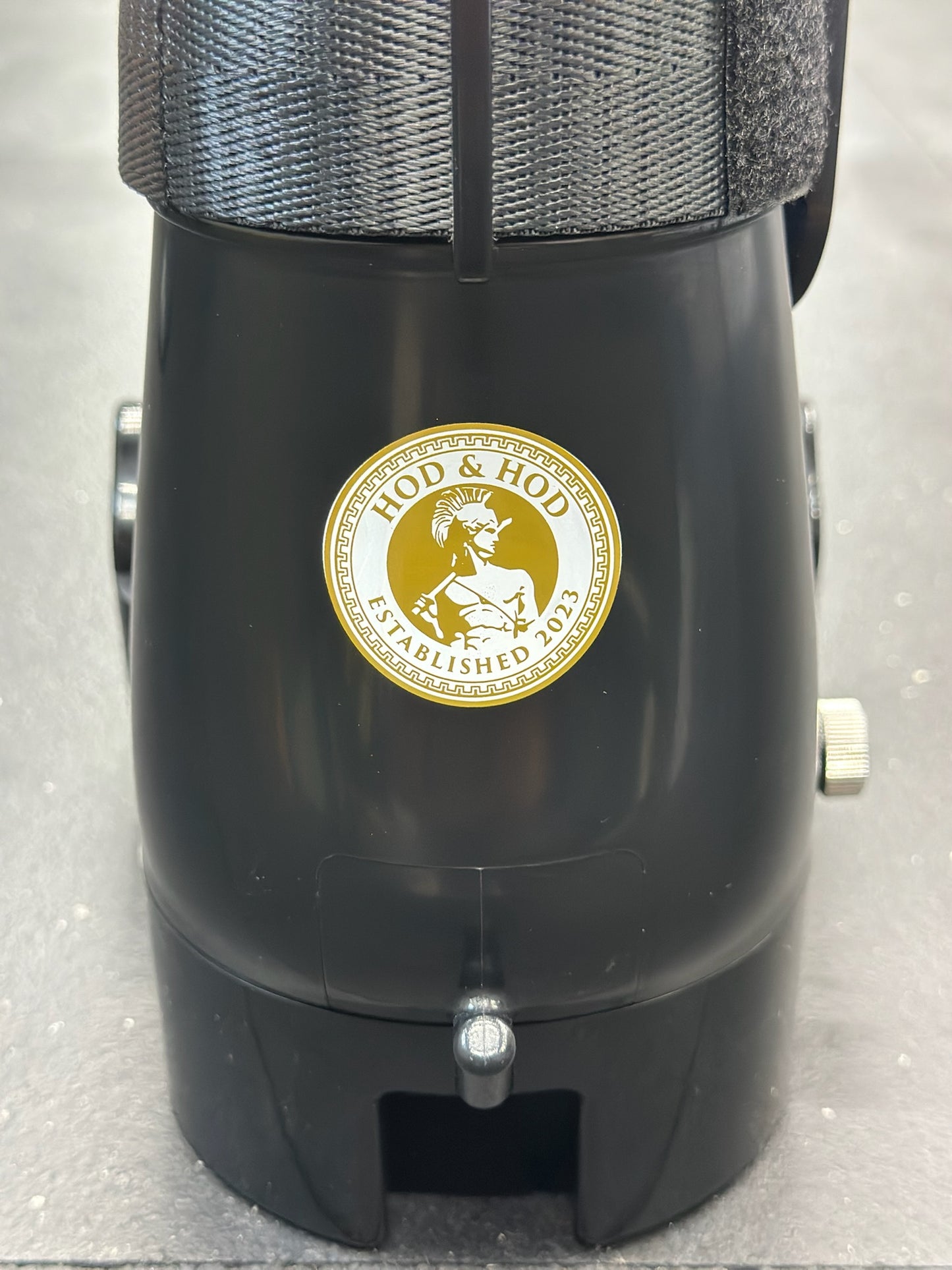
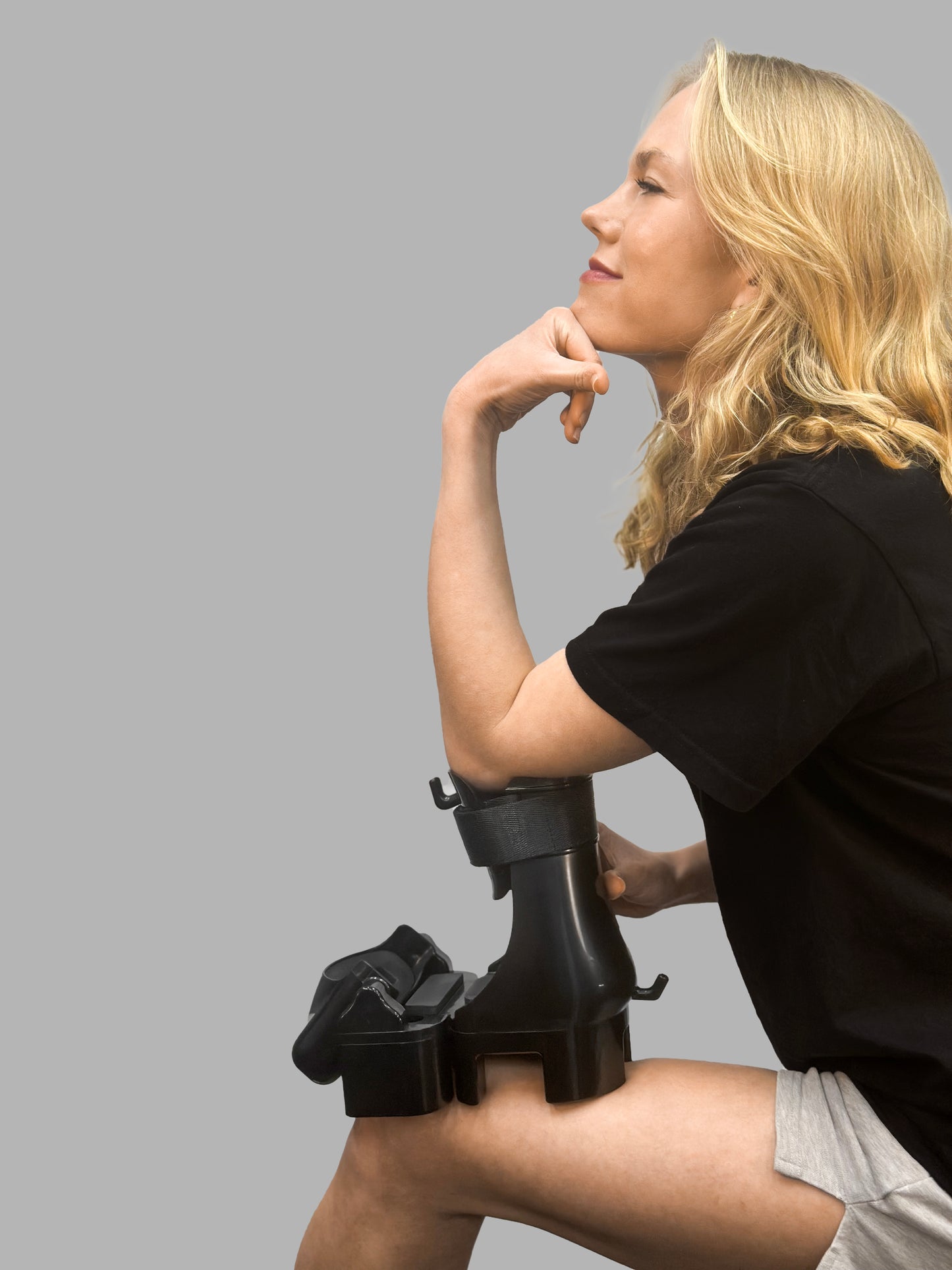
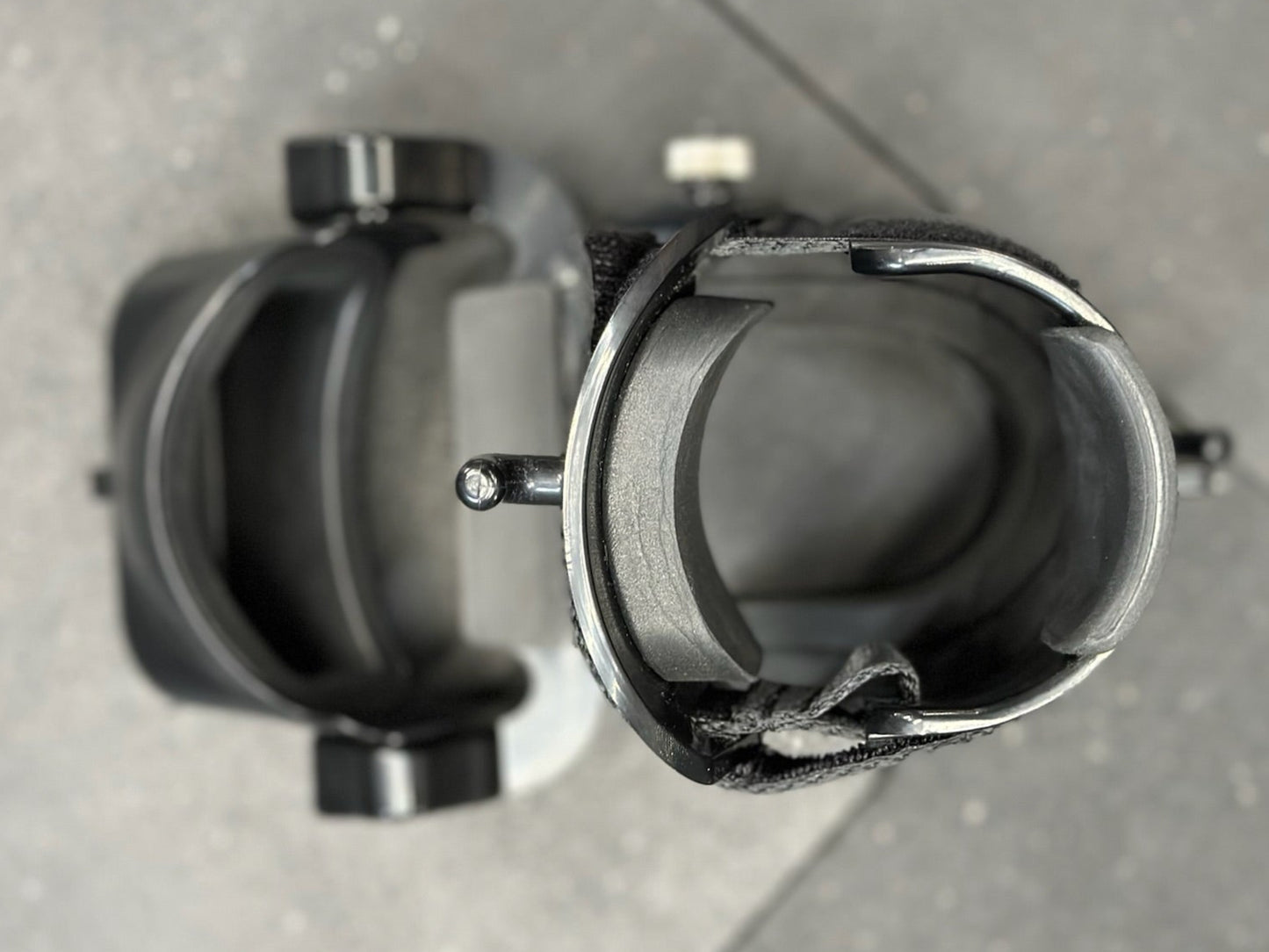
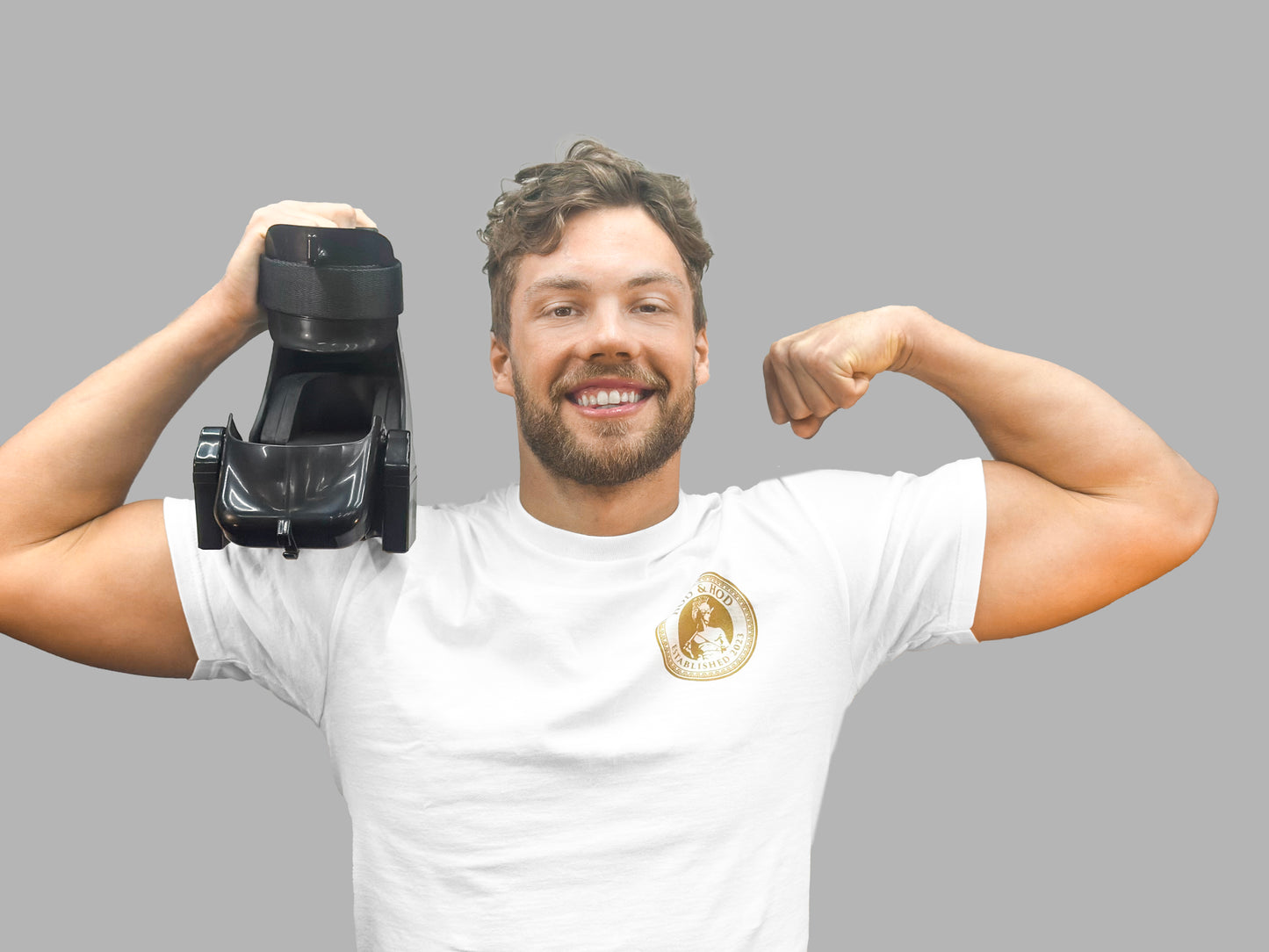
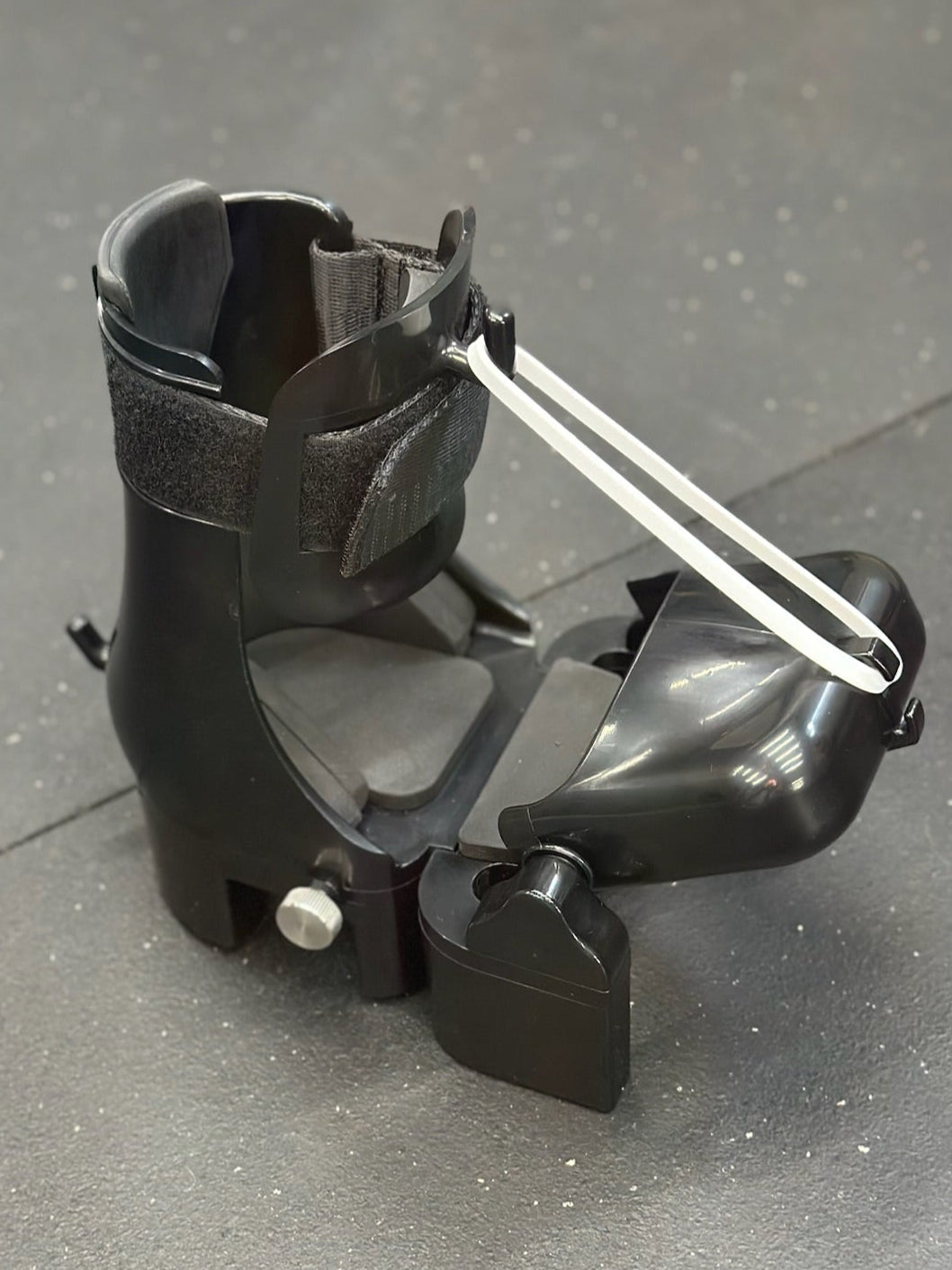
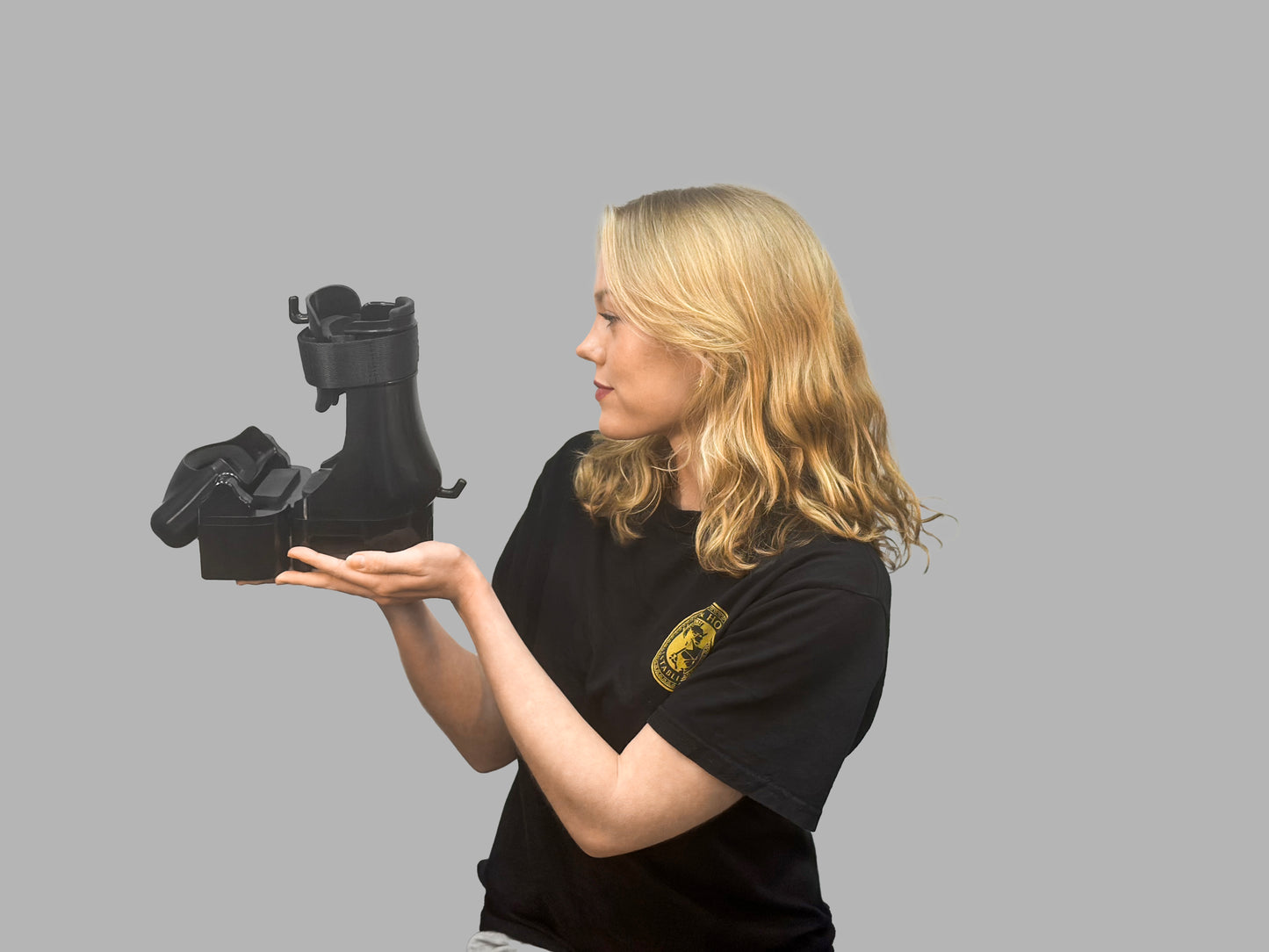
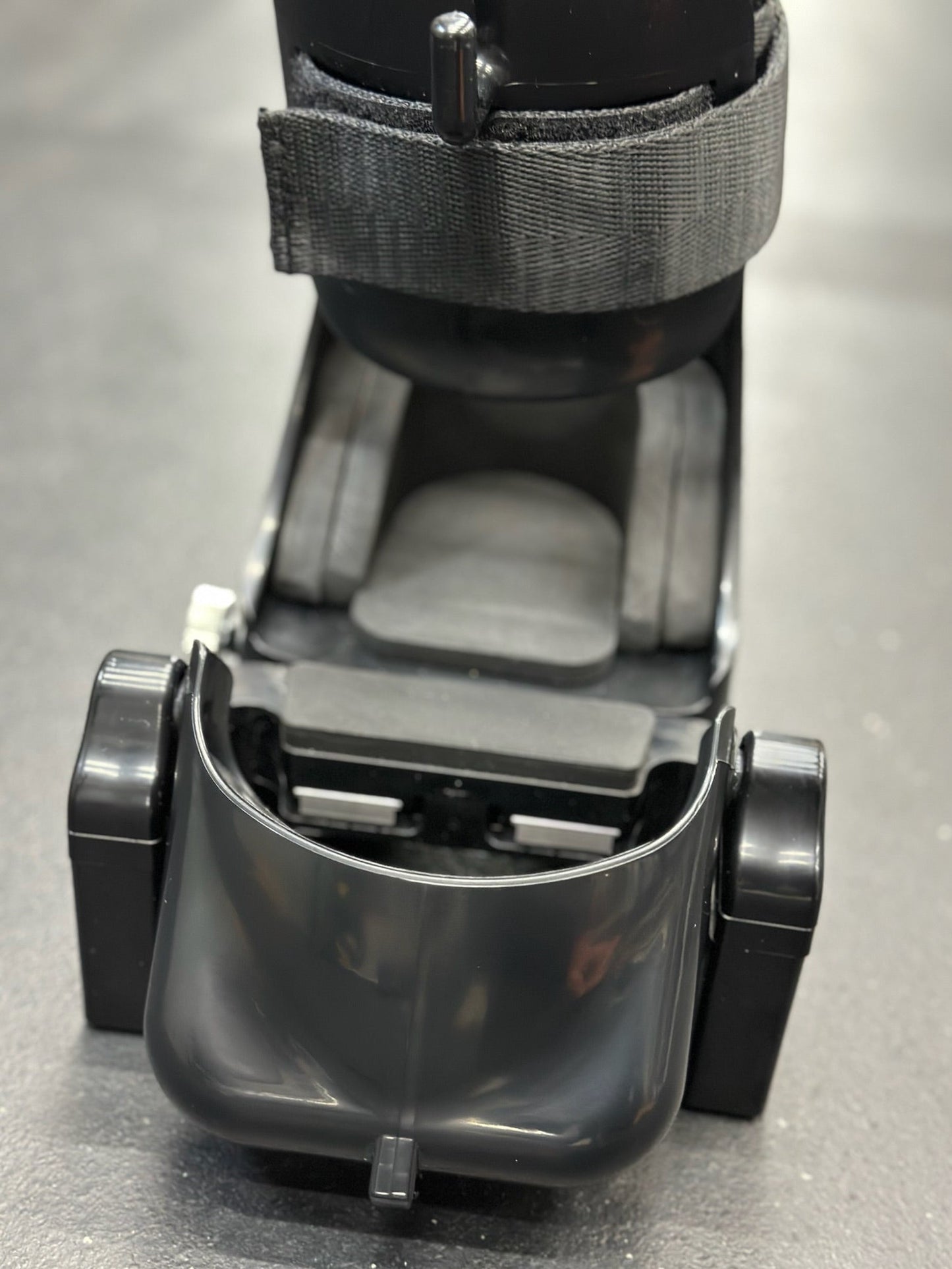
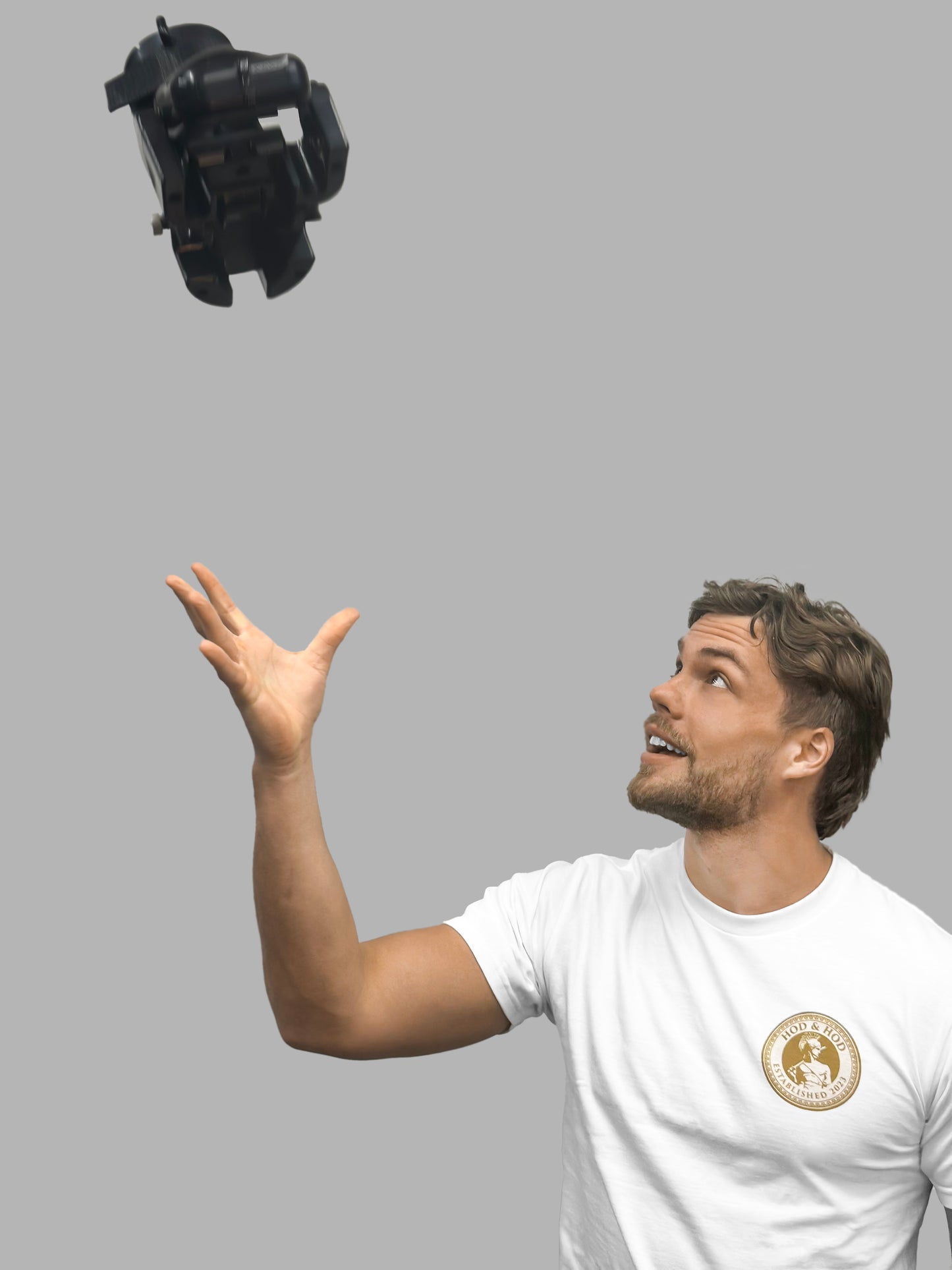

Athletic Performance
Speed and Acceleration
Forward force generation is a crucial component in all sports. Having the ability to quickly and powerfully move forward is what sets elite athletes apart from the rest. This is measured in speed and acceleration. Thus, the more forward force an athlete can generate, the faster that athlete is.
A 2016 study found that stronger plantar flexors could create a larger and more efficient horizontal force production which could lead to better performance (Morin and Samozino,). The FoosFoot™ allows an athlete to exercise the plantar muscles of the foot through progressive overload, leading to stronger plantar muscles.
Agility
Agility is a major component of athletic performance. It is the ability to change direction quickly and efficiently without becoming unbalanced or losing speed. Being agile is vital in many sports and is why you see "undersized" or comparatively "slow" athletes excel.
Yuasa et al. undertook a study to determine the relationship between toe muscle strength and agility measured by the ability to change direction. The athletes were tested on their pro-agility and 3-cone drill times and they found a significant correlation between dorsiflexion toe strength and agility.
The great thing about the FoosFoot™ is the ability to exercise the foot and toe muscles through dorsiflexion. An athlete can progressively overload their dorsiflexion toe muscles and build up their strength over time.
Dynamic Balance
Dynamic balance is a synergistic skill that has an impact on all facets of athleticism. A great example is a gymnast on the balance beam. The routine involves an acrobatic display that demonstrates balance while leaping, turning, and jumping.
Dynamic balance shows up in sprinting (the body needs to maintain balance while exerting horizontal force), agility, and jumping (the body needs to be balanced to exert maximal vertical force). A 2016 study found that insoles improved the dynamic balance of participants in part because the flexor hallucis brevis muscle activated more. They went on to say that short foot exercises were even better to improve dynamic balance.
The FoosFoot™ allows the user to exercise the flexor hallucis muscle through the ability to do plantar flexion exercises and to progressively strengthen it.
Jumping
The ability to jump high provides a significant advantage in many sports. Some great examples are track and field, volleyball, and basketball. Improving their jump performance is a must, especially for athletes that cannot rely on a height advantage in these sports.
A 2020 study investigated the importance of toe flexor strength for jump performance and found that indeed toe flexor strength was an important parameter for improving jump performance. The FoosFoot allows an athlete to exercise their toe flexor muscles through progressive overload and increase their toe flexor strength over time.
Injury Recovery/Rehab
Ankle Sprains
Ankle sprains are particularly devastating for athletes. They obviously force the athlete to miss time which is never a good thing. But they can have an even bigger impact over time that can be overlooked.
Ankle sprains are quite common and once an ankle has been sprained, it becomes much easier to sprain it again. Oftentimes an athlete loses function after spraining their ankle whether that be losing speed, agility, balance, or jumping power. Furthermore, imbalances can occur as the body starts to favor the uninjured side. Finally it can restrict certain exercises, such as the squat, where the athlete can no longer squat to depth as their sprained ankle severely restricts their ankle mobility.
Outside of athletes, ankle sprains can cause many problems. The high probability of reoccurrence still holds true as does the loss of mobility and balance. These are major risk factors for an elderly person.
Multiple studies have shown the efficacy of an exercise program following an ankle sprain. They have shown a reduction in injury reoccurrence, a faster recovery time, and even increased function following recovery.
The FoosFoot™ shines in this area. It allows the user to strengthen their dorsal and plantar muscles of the foot through progressive overload. It is low stress and allows the user to recover from an ankle injury from the comfort of their own home.
Running Related Injuries
Running is a great exercise that people use to get into shape and to stay in shape. However running related injuries such as shin splints, plantar fasciitis, ankle sprains, and achilles tendonitis stop a person from being able to continue running. They are also quite painful. These can be particularly devastating for a person who turns to running to get into shape as suffering one of these injuries is highly likely to put a stop to all exercising.
A 2020 study looked into the idea that a foot exercise regimen could reduce these running related injuries. They found that once a participant had reached the four month mark of exercising their feet, they had a 2.42 times lower chance of experiencing a running related injury. This is especially important for inexperienced runners to prevent these injuries and to be able to continue with their exercise program.
The FoosFoot™ allows a person to exercise the muscles of their feet through plantar and dorsiflexion with progressive overload. It is quick, convenient, and can be done from the comfort of your own home.
Dynamic Balance
Dynamic balance is very important in athletics, but it also plays an important role in everyday life. Among the elderly population, falls are a great concern as they are the leading cause of fatal and non-fatal injuries. A major contributing factor to this is reduced muscle strength and balance.
A 2016 study found that insoles improved the dynamic balance of participants in part because the flexor hallucis brevis muscle activated more. They went on to say that short foot exercises were even better to improve dynamic balance.
While insoles have some problems of their own, it is clear that exercising the muscles of the feet is beneficial for dynamic balance. The FoosFoot™ allows the user to exercise the foot through plantar and dorsiflexion. With the FoosFoot™ one can build strength over time in the comfort of their own home.
Circulation
Weight lifting provides numerous benefits with respect to circulation in the body.
1. An increase in muscle mass means larger, more numerous blood vessels which leads to more efficient blood flow.
2. Muscles that are put under tension from lifting need more blood flow. The blood vessels vasodilate i.e. they widen and decrease blood pressure to allow more blood to flow to the area being exercised.
3. Better blood flow from these processes means that more oxygen and more nutrients reach the area which leads to better health in the area.
4. Over time, weight lifting can lower blood pressure which has a positive impact on circulation.
The FoosFoot™ allows the user to exercise the muscles of their feet through plantar and dorsiflexion. Many problems with the feet and many sources of pain in the feet stem from the fact that blood flow and circulation in the area is suboptimal. Exercising the feet directly will lead to these positive adaptations showing up over time.
General Foot Pain
Problems
The most obvious problem with foot pain is ..... pain. Whether it be a sharp pain that pops up from time to time or a constant, low-grade pain that never seems to go away, pain degrades quality of life. On top of this, there are less recognized problems that can have a significant effect.
Many people respond to foot pain by restricting their activities. They walk less, exercise less and this can have a negative impact on their health.
Or take for example a vacation centered on sightseeing. Once the foot pain kicks in, this person is going to be severely restricted in places they are willing and able to go and see.
Many jobs require a person to be constantly on their feet such as nurses, construction workers, and hairdressers to name a few. Naturally, many people in these professions struggle with foot pain.
On the flip side, office workers who are constantly sitting down throughout the day also experience foot pain. Prolonged sitting can lead to worse circulation, higher blood pressure, muscle fatigue, muscle weakness and a disconnect throughout the kinetic chain.
Do Orthotics Help?
On the surface, orthotics appear to be a good deal. They can relieve the symptoms of foot pain, add support to the arches of the feet, and there is even some evidence that they can improve the balance of an individual.
However, all these benefits have caveats. Orthotics only relieve the symptoms. This means that while a person is not wearing shoes, their feet are still going to hurt as the orthotics have not addressed the root cause of the pain. Additionally, orthotics tend to lose their potency and need to be replaced fairly regularly. This means spending more money. Finally, and perhaps worst of all, a study has found that orthotics can actually cause the muscles of the feet to atrophy. This means that orthotics can be the direct cause of more foot pain.
Orthotics certainly can add support to the arches of the feet. But again, this only applies while they are being used and they do nothing to build the intrinsic support of the arches. If they do indeed atrophy the muscles of the feet, then orthotics are again causing the problem that they purport to fix. The smaller the muscles become, the more support is needed. Then the larger the orthotics need to be and the more those muscles atrophy.
Lastly, orthotics have some evidence to show that they can improve the balance in an individual. Again, this benefit would only apply while using said orthotics as the orthotics do not increase the baseline balance of the individual.
Other Solutions?
Orthotics are not the only solution to foot pain. Some common solutions are NSAIDs, icing, rest, custom supportive shoes, massaging/stretching, and corticosteroid shots.
NSAIDs are over the counter painkillers such as aspirin or ibuprofen. These are meant to be a stopgap as they do not address the root cause of the pain and they cannot be taken for a long period of time.
Icing is in a similar boat. It does not address the root cause of the pain and therefore once the ice is taken off, the pain will return. The pain relief from ice is also very temporary and cannot be used during the middle of a work shift.
Rest is a great option. It gives the body time to do its job and recover. However, as most people are constantly on their feet, it is almost impossible to give the feet the necessary amount of time needed to repair the damage. On top of this, rest does not improve the function of the foot muscles and therefore the pain is just as likely to return.
Custom supportive shoes suffer from the same drawbacks as orthotics. They may help quite a bit with the foot pain at the beginning but as is the case with orthotics, once a person takes their shoes off, the pain is still there. Additionally, custom shoes do nothing to address the reason for the pain in the first place.
Massages and stretching are two of the better options. They can increase blood flow and attempt to address the pain at the root of the problem. Clearly a good start but they have their own limitations. If the cause of pain is weak foot muscles, flat feet, or muscle imbalances then massaging or stretching are going to do little to help these conditions.
Corticosteroids for foot pain are typically cortisone shots that are meant to relieve pain and inflammation. In the short term, these are capable of providing some relief. They do not address the underlying issues that are causing the foot pain in the first place. On top of this, they can have some serious side effects when overused such as weakening the bones, tendons, and cartilage of the feet.
Benefits of Exercise
Many of the causes of foot pain can be linked directly to inflammation. The body is not able to effectively circulate the blood through the area and a low-grade, chronic inflammation of the foot sets in.
Exercising can help fix this. Working out the muscles of the feet causes an increase in blood flow. This increased circulation can deliver more oxygen and nutrients directly to the feet as well as flush out waste products and cellular debris that are contributing to the inflammation.
Posture
Benefits of Good Posture
Good posture is one of the most overlooked aspects of health. People often know that they need to improve their posture but they do not know how, and they do not know what benefits it can bring.
- Better Circulation
- Better Breathing
- Taller
- Perceived as More Attractive
- Better Mood
- Less Joint Pain
- Less Headaches
- Better Balance
- Better Digestion
But how does one improve their posture?
Area of Focus
Advice on how to improve posture usually focuses on "weak muscles of the upper back", "weak muscles of the lower back", "strengthen the abs", "realign the spine", or dozens of variations of these.
What is rarely if ever suggested is to strengthen the muscles of the feet. This is a big oversight as the feet are the foundational muscles of the body and are therefore the foundation of posture. This is not to say that these other exercises do not work but rather that exercising the muscles of the feet needs to be included in any posture workout regimen.
Kinetic Chain
The kinetic chain describes how the muscles and joints of the body connect and work together to move the body. The interconnectedness is important, when one section or muscle is impaired, it can throw off the whole chain and/or cause an injury elsewhere.
This concept is vitally important for the feet. Most people have weak foot muscles from wearing tight, cushioned shoes that restrict them and they never exercise their feet. This leads to the very base of the foundation being out of sync with the rest of the kinetic chain.
With the kinetic chain being disrupted because of the feet, pain or injury can show up elsewhere such as the knee, hip, or lower back even though the origination is actually the feet. Pain that comes from a kinetic chain disruption is difficult to diagnose as few doctors think to investigate whether or not a foot imbalance could be causing the problem.
FoosFoot™ Helps
The FoosFoot™ can help tackle this problem head on. The major cause of disfunction of the feet is weak foot muscles. The feet have dorsal and plantar muscles and both need to be exercised to keep the foot strong and balanced.
The FoosFoot™ allows the user to exercise the foot through plantar and dorsiflexion as well as the ability to progressively overload the exercise. This means that the foot muscles grow stronger and more resilient while at the same time become more balanced.
Flat Feet
Problems
Flat feet can cause significant problems. As the arches of the feet collapse, the entirety of the foot starts to touch the ground. This causes the ankle to rotate inward, which in turn causes the knees to rotate out of position as well. Ultimately, the entire body is thrown out of correct position because of the collapsed arches.
What problems can arise from these changes?
Pain in the feet. Muscles, ligaments, and bones are out of the correct alignment and therefore any locomotion will cause them to interact incorrectly.
This imbalance also leads to a changed gait. A changed gait means that certain joints will have an increase in the amount of stress that they are under which leads to more wear and tear and more pain.
Imbalances in the legs can lead to a greater risk of arthritis, shin splints, plantar fasciitis, and other leg maladies showing up.
Decreased athletic performance. The arches provide a "spring" which is absent in a person that has flat feet. The altered gait is suboptimal for running, jumping and agility all of which are crucial for athletic performance.
Solution
The solution to flat feet is quite simple. Exercise the muscles of the feet. The stronger and more involved the muscles of the feet are, the more the arch will naturally form. The FoosFoot™ is perfect for this. It allows the user to exercise the plantar and dorsiflexion muscles of the feet with progressive overload. This means that muscles of the feet can continually get stronger while staying balanced.












